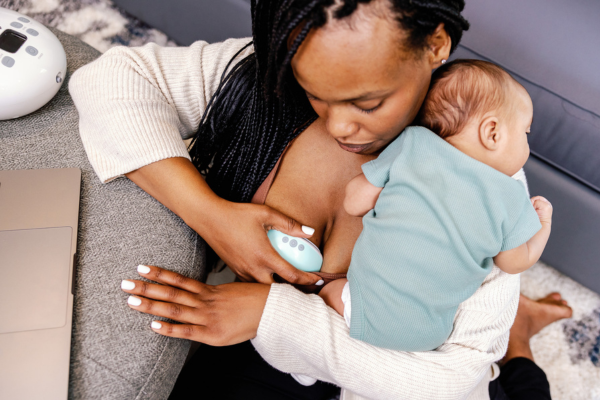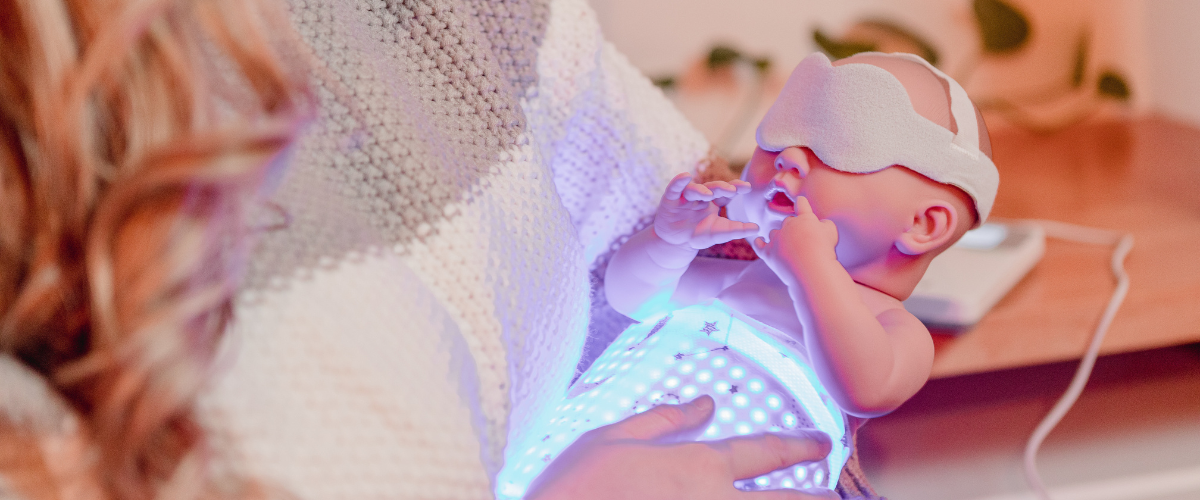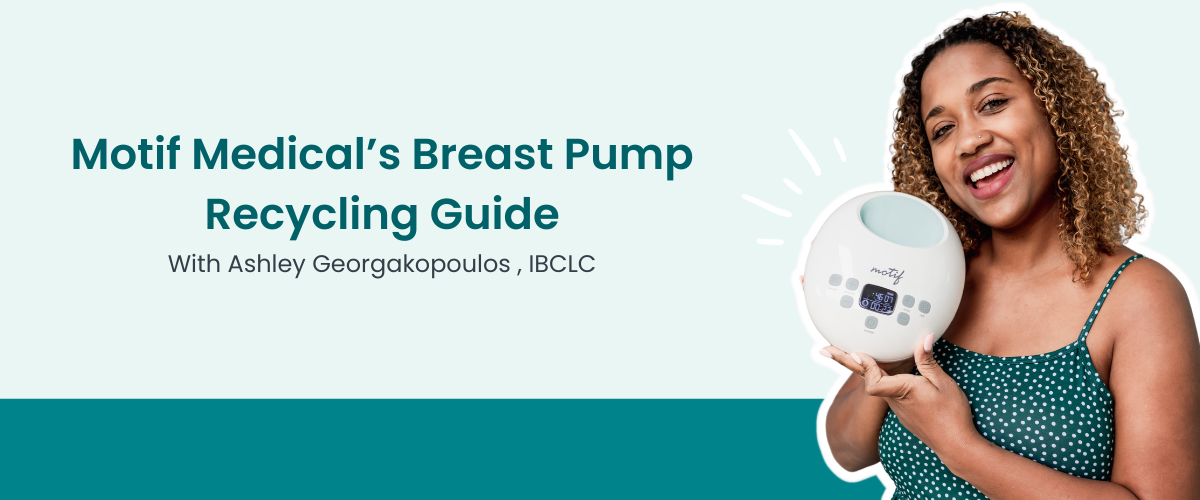Can I Breastfeed My NICU Baby?
Breastfeeding looks different for a baby in the Neonatal Intensive Care Unit (NICU). If feeding well, the main obstacle is separation from the mother, as there is no 24-hour access point. These specialized units offer advanced medical care and support to premature or critically ill newborns. However, they also present unique challenges, particularly in relation to breastfeeding. The journey of breastfeeding in the NICU is a testament to a mother's unwavering determination-- a delicate balance between medical necessity and the invaluable benefits of nurturing through breast milk.
The NICU is a high-tech environment, and the action of breastfeeding takes on a whole new level of complexity. From the tangle of tubes and wires that crisscross an incubator to the concern over your babies ability to latch due to premature development, every step forward in the breastfeeding journey can feel like a giant leap. The emotional toll is immense as mothers grapple with feelings of helplessness, guilt, and even a sense of exclusion from their babies' care. However, the challenges these mothers face are not insurmountable. It's necessary to understand the obstacles that arise during breastfeeding in the NICU. By exploring strategies, families can improve their babies health and parental bond.
In short- yes, breastfeeding can be possible with the appropriate support, knowledge, and tools.
Feeding Tools
For breastfeeding and pumping mothers with babies in the NICU, there is a variety of tools and methods that offer vital support. From specially-designed breast pumps for more intensive pumping schedules, lactation consultants skilled within NICU dynamics, and techniques like, “kangaroo care”, that promote skin-to-skin contact. These resources empower mothers to navigate the challenges for breastfeeding in the NICU and enhance their infants' developmental journey.
Types of techniques for preemies that we will cover in this blog:
- Cup Feeding
- Finger Feeding
- Supplemental Nursing System (SNS)
- Nipple Shields
- Tube Feeding
- Breast Compression
Cup Feeding
Cup feeding allows a baby to use gravity for the flow and their tongue to “lap up” milk. It requires very little effort on their end, and a slow, steady hand from the provider. Swaddling helps this method be more efficient, as it keeps their arms down and controlled, as well as catches drippings. The save in energy disbursement allows the calories to be put toward growth, speeding up the discharge rates.
Finger-Feeding
Finger-feeding can be used first before chest or bottle feeding. This method is especially useful in providing colostrum, the mother's first milk. Finger-feeding is a way to coax the acceptance of milk intake in a slow and controlled manner. Finger-feeding is an approach for giving your baby expressed breast milk without using a bottle nipple. Some babies may prefer the bottle nipple and refuse the breast. Finger-feeding uses a bottle with a thin tube rather than a bottle nipple. Note: Your nails are supposed to be trimmed short. Artificial nails should be secure. A similar method is an SNS setup.
Supplemental Nursing System (SNS)
A type of feeding tube called a Supplemental Nursing System (SNS) can be placed, as well, for mature milk, used with the finger to slowly feed milk through. The pressure from the finger prepares the tongue and gag reflex for the presence of a nipple, be it a natural or bottle one. When working on the latch, the lactation consultant may actually teach the mother to attach this SNS system close to the tip of the nipple, taped flat to allow the same slow feeding process to encourage suckling. The tube can then be slipped out mid-feeding to transition off of the system. This method will also aid in milk production, as the stimulation will enhance hormonal response in the mother.
Nipple Shields
Nipple shields may be recommended when learning to latch a preemie for a couple of reasons: it helps to protect the nipple tissue while the baby learns to latch, but it also is an excl transition from a bottle if that is what they are used to. A faster flow nipple shield will aim to eliminate suction strength needs in the baby, and get more calories without much depleted.
Not all nipple shields are shaped the same. You can opt for a design that allows some skin-to-skin contact with a semi-circle design instead of completely covering the areola.
Feeding Tubes
The usage of feeding tubes may be necessary for more immediate caloric deficit needs, especially if the baby is underwhelmingly responsive to other feeding methods. In the case of a premature infant, calorie deficits have to have immediate action. The combination of easy and effective feeding methods with human milk can quickly get a premature infant back on track. And shorten their stay in the NICU.
Expressing Colostrum
These techniques are especially helpful in expressing colostrum, which is very thick, and for assisting in reducing energy expenditure to draw milk out.
Breast Compression
Breast compression is an effective method for both feeding at the breast, as well as expression with a hand or breast pump. Building up internal pressure takes some of the workload off of the infant, especially if still learning and needs to conserve as much energy as possible to gain weight. This technique helps baby's active suckling and is particularly effective for babies who are premature or have difficulty latching. By using breast compression, a mother can ensure her baby receives a steady flow of milk, aiding in effective feeding and potentially increasing the overall intake. This technique is particularly valuable for babies in the NICU as it helps stimulate the natural breastfeeding process while providing essential nourishment.
“Hands-On Pumping”
“Hands-on Pumping” incorporates this notion, as well, using compression to increase overall output while pumping by massage and compressing both before and during pumping sessions. Utilizing a wearable pump or a hands-free bra can make this method more feasible.


Enhancement Methods
Skin-to-skin
Research has consistently highlighted the profound benefits of direct skin-to-skin contact with both the mother and, importantly, the father. Facilitating such tactile connections, involving both mothers and fathers, can have a profound influence on the overall well-being of premature babies, a key consideration in NICU care practices. The ideal time initially to allow for skin-to-skin is immediately after birth, within the first 30-60, uninterrupted. When a baby is too early, this may look a little different, however. Furthermore, the positive impact extends to the rooting reflex, a crucial developmental milestone for infants in the NICU.
Kangaroo-care
Time spent in the NICU is time spent in separation from the parents. While necessary in order to receive the proper medical care, it can be difficult to practice breastfeeding. Kangaroo Care is the skin-to-skin holding, up against the chest, that allows for physical contact and bonding, regardless of the ability or developmental stage to try to breastfeed. Research states that this method can speed this process up. There are stabilization qualities that create the environment for developmental growth and a shorter NICU stay. Discuss with the neonatologist the options and frequency to utilize Kangaroo Care.
Sources
-
https://www.jandonline.org/article/S2212-2672(15)01043-6/fulltext
-
https://www.marchofdimes.org/complications/touching-and-holding-your baby-in-the-nicu.aspx
-
https://www.healthychildren.org/English/ages-stages/baby/breastfeeding/ Pages/Providing-Breastmilk-for-Premature-and-Ill-Newborns.aspx
-
https://www.researchgate.net/publication/282126509_Chapter_4_Breastfeedi ng_the_NICU_Infant_What_to_Expect
Information provided in blogs should not be used as a substitute for medical care or consultation.









